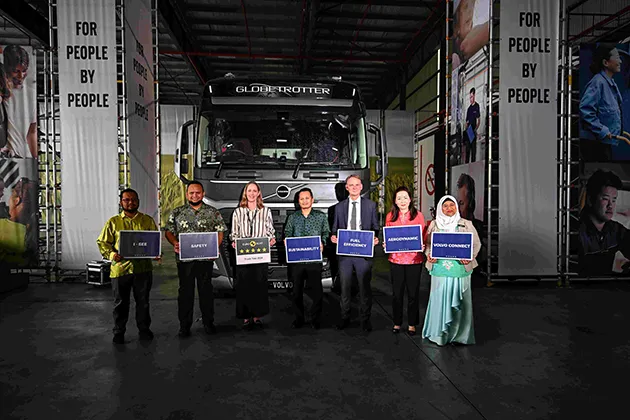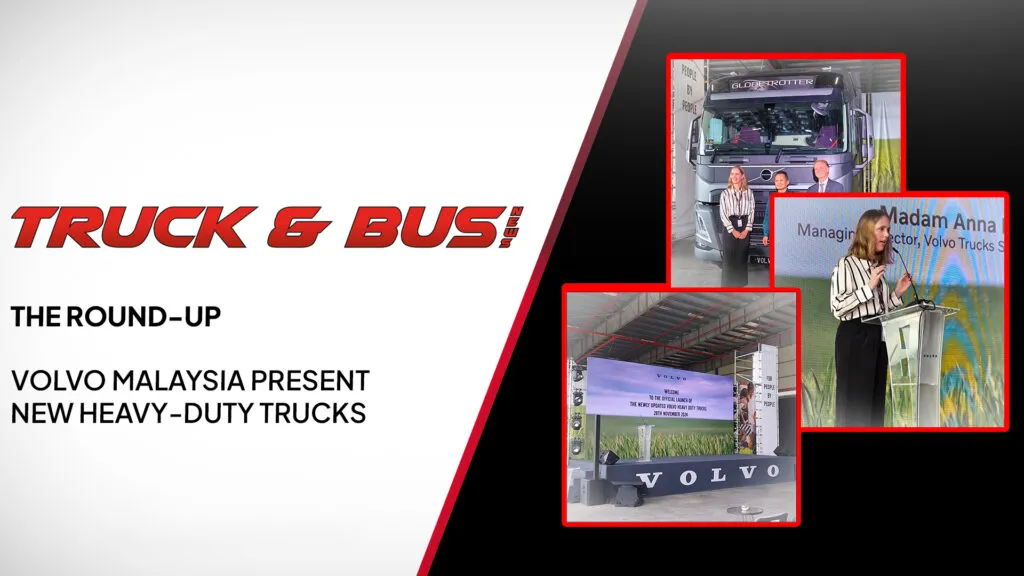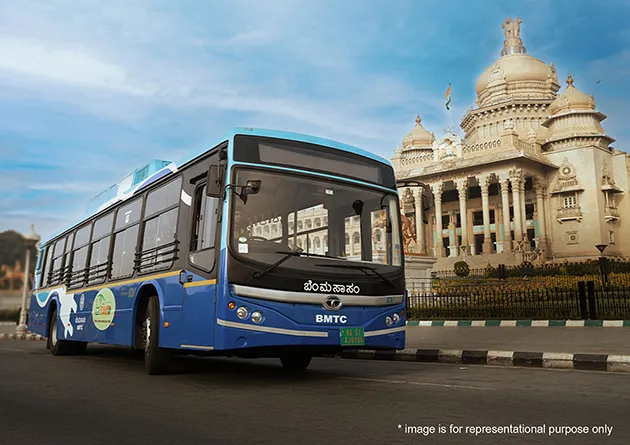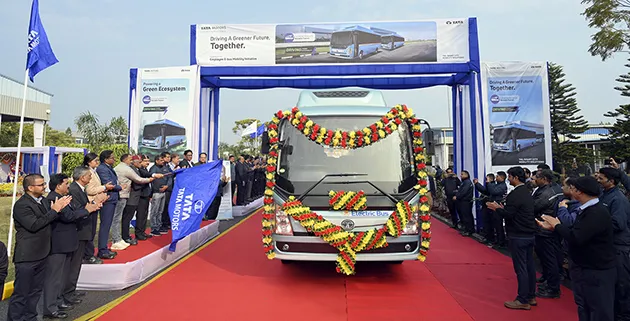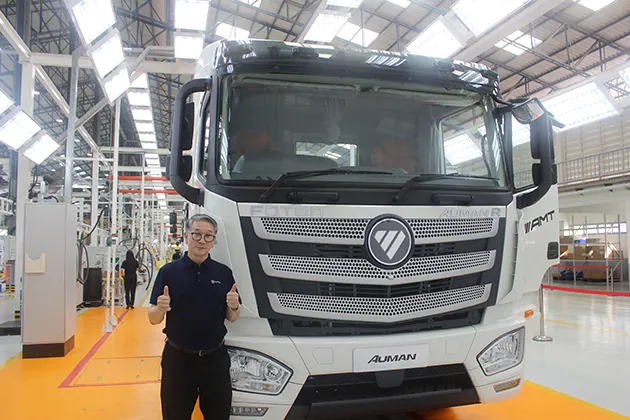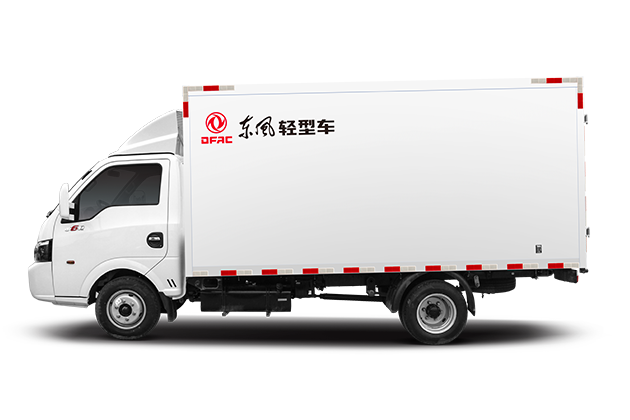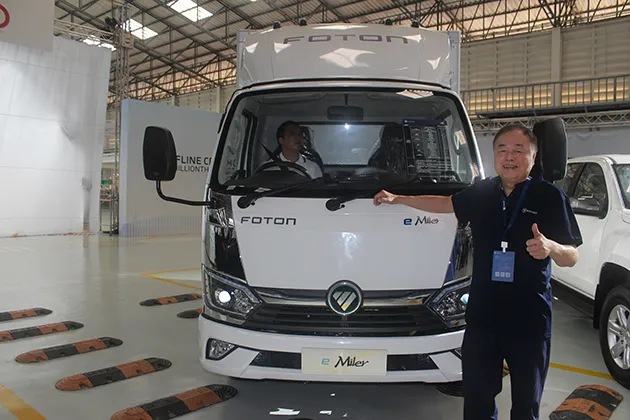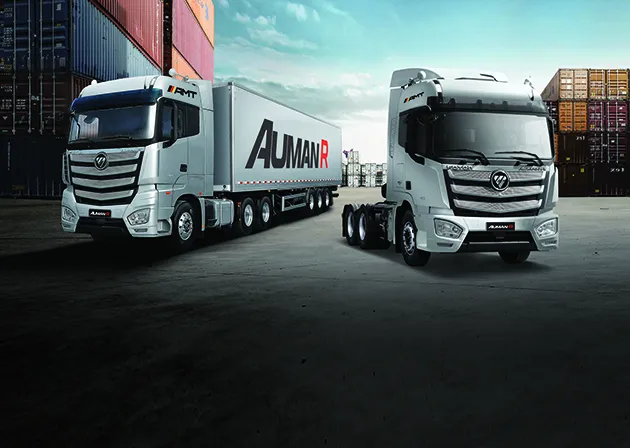Malaysia has emerged as the second-best performing ASEAN country in global trade logistics, ranking 26th globally in the 2023 World Bank’s Logistics Performance Index (LPI), a leap from 41st place in 2022.
Volvo Trucks Launches Enhanced Heavy-Duty Range for Safer, Greener Roads
To support Malaysia’s ambition to strengthen its logistics ecosystem, Volvo Malaysia Sdn Bhd (Volvo Trucks) has launched its updated range of heavy-duty trucks, designed to enhance fuel efficiency, reduce carbon emissions, and improve safety and productivity.
“Safety, Quality, and Sustainability are our core values at Volvo Trucks. We are passionate about delivering solutions that elevate safety for drivers and operators across the transport industry,” said Anna Engblom, Managing Director of Volvo Trucks Southeast Asia and Japan, during the launch event. The updated range of heavy-duty trucks reflects this commitment by integrating innovative features that prioritize safety, environmental care, and operational efficiency.
Road safety remains a key concern, particularly with heavy vehicles. While safety in Malaysia is largely overseen by agencies like the Road Transport Department and the Land Public Transport Agency, Volvo Trucks believes the private sector plays a vital role in advancing safety through innovation. The newly updated heavy-duty trucks aim to reinforce this position.
The updated range includes Volvo’s signature FH, FM, and FMX models, featuring aerodynamic design enhancements, upgraded driveline systems, and intelligent safety systems. Key highlights include the Globetrotter cab’s aerodynamics, delivering up to 9% improved fuel efficiency, and the standard inclusion of Forward Collision Warning with automatic emergency braking.
Other notable features include the Cruise Control with I-See, which optimizes speed and gear shifts based on topography, contributing to fuel efficiency. Additionally, the trailer parking brake is now automatically engaged when the parking brake is activated, enhancing safety during stationary periods.
Volvo Trucks has a long history of safety innovation, including the development of the three-point seatbelt. The updated range introduces Volvo Dynamic Steering (VDS) for vehicle stabilization and an optional Camera Monitoring System (CMS) equipped with night infrared functionality to reduce blind spots. CMS, available from Q2 2025, also supports fuel efficiency while enhancing visibility.
LED lighting further improves visibility for nighttime and low-light driving conditions. These features helped Volvo Trucks achieve a five-star rating from Euro NCAP for the Volvo FH and FM models, marking the first safety evaluation of heavy-duty trucks by the European consumer test organisation.
Aligned with Malaysia’s Low Carbon Mobility Blueprint 2021-2030, Volvo’s newly updated trucks meet Euro 5 emissions standards. This supports businesses aiming to reduce emissions and transition toward more sustainable fleet operations. Volvo’s trucks also align with action plans focusing on low-emission vehicle technologies, aiding Malaysia’s progress toward greener transportation.
Recognising the demanding nature of heavy-duty trucking, Volvo Trucks has revamped the driver cabin for improved comfort and productivity. Features include ergonomic controls, intuitive interfaces, spacious resting areas, and an enhanced audio system with two USB-C ports.
Safety support features from the Safety+ package, such as Forward Collision Warning, Adaptive Cruise Control, Lane Keeping Support, and Driver Alert Support, further enhance the driving experience. These advancements aim to reduce fatigue and improve long-haul productivity for drivers, who play a critical role in supporting the nation’s economy.
To complement the launch, Volvo Trucks plans to conduct driver training sessions to ensure optimal use of the updated trucks. Additionally, Volvo’s “Iron Women” program, launched in September 2024, aims to empower women in the trucking industry. The initiative has already seen five women graduate, with a goal of training 100 women as heavy-duty truck drivers by the end of 2025.

